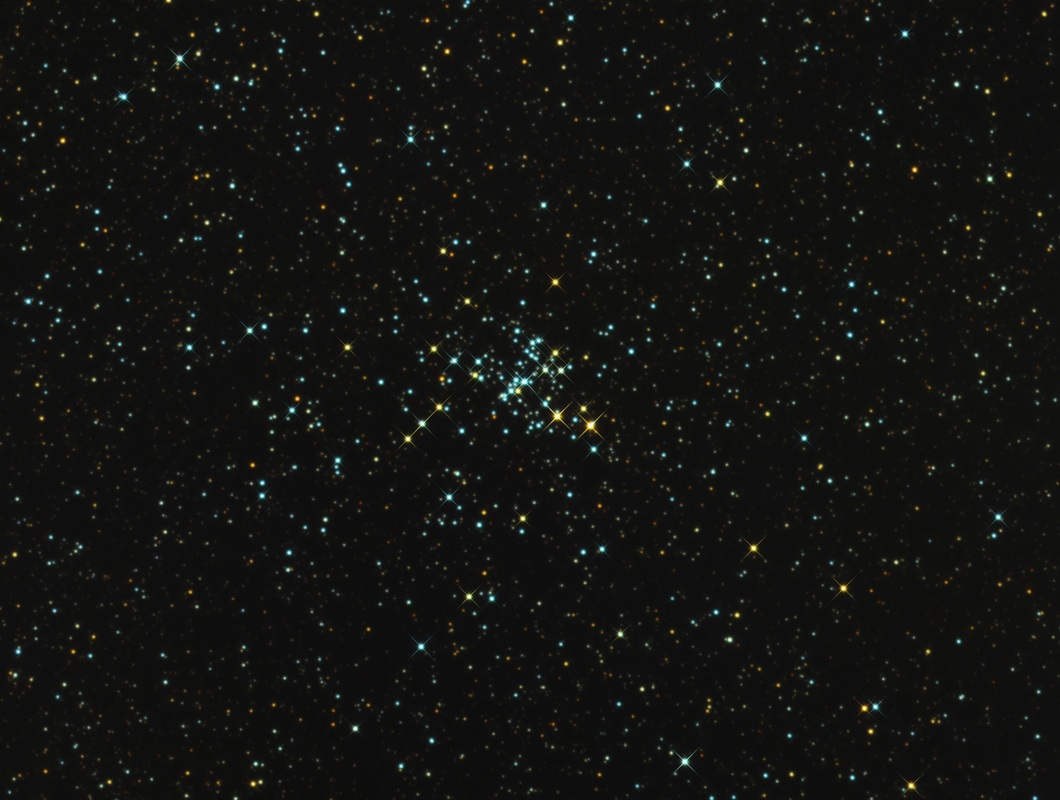"And it's something quite peculiar, Something shimmering and white, Leads you here despite your destination, Under the Milky Way tonight" (Church, Under The Milky Way).
These lyrics were so appropriate last night, but not really in the way I think they were originally intended. The Moon was out of the sky early, but there were high clouds that were fairly dense. Things were shimmering way too much, and the clouds were way too white. Given the conditions, I decided to go after one of the Messier objects that was still missing from my collection, Messier 93. This is a star cluster located in Puppis in the deep Southern skies (almost -24 degrees declination). I did image it very close to the time it was transiting the meridian.
Tracking with my mount was absolutely horrid regardless of where I was in the sky. I'm not sure if that it because of the poor conditions with the clouds, the seeing, or problems with the mount at what were very cold temperatures (2F or -16.66 Celsius) or some combination of them. Fortunately star clusters do not need long integration times and in fact, you can often get better color and separation from the background by using shorter exposures. Total integration time was just 27 minutes (9 minutes each color channel with 1 minute subs binned 1x1).
These lyrics were so appropriate last night, but not really in the way I think they were originally intended. The Moon was out of the sky early, but there were high clouds that were fairly dense. Things were shimmering way too much, and the clouds were way too white. Given the conditions, I decided to go after one of the Messier objects that was still missing from my collection, Messier 93. This is a star cluster located in Puppis in the deep Southern skies (almost -24 degrees declination). I did image it very close to the time it was transiting the meridian.
Tracking with my mount was absolutely horrid regardless of where I was in the sky. I'm not sure if that it because of the poor conditions with the clouds, the seeing, or problems with the mount at what were very cold temperatures (2F or -16.66 Celsius) or some combination of them. Fortunately star clusters do not need long integration times and in fact, you can often get better color and separation from the background by using shorter exposures. Total integration time was just 27 minutes (9 minutes each color channel with 1 minute subs binned 1x1).
Since subs were short, the diffraction spikes that I like in such images were very subdued. I added some using Carboni's actions.

 RSS Feed
RSS Feed
